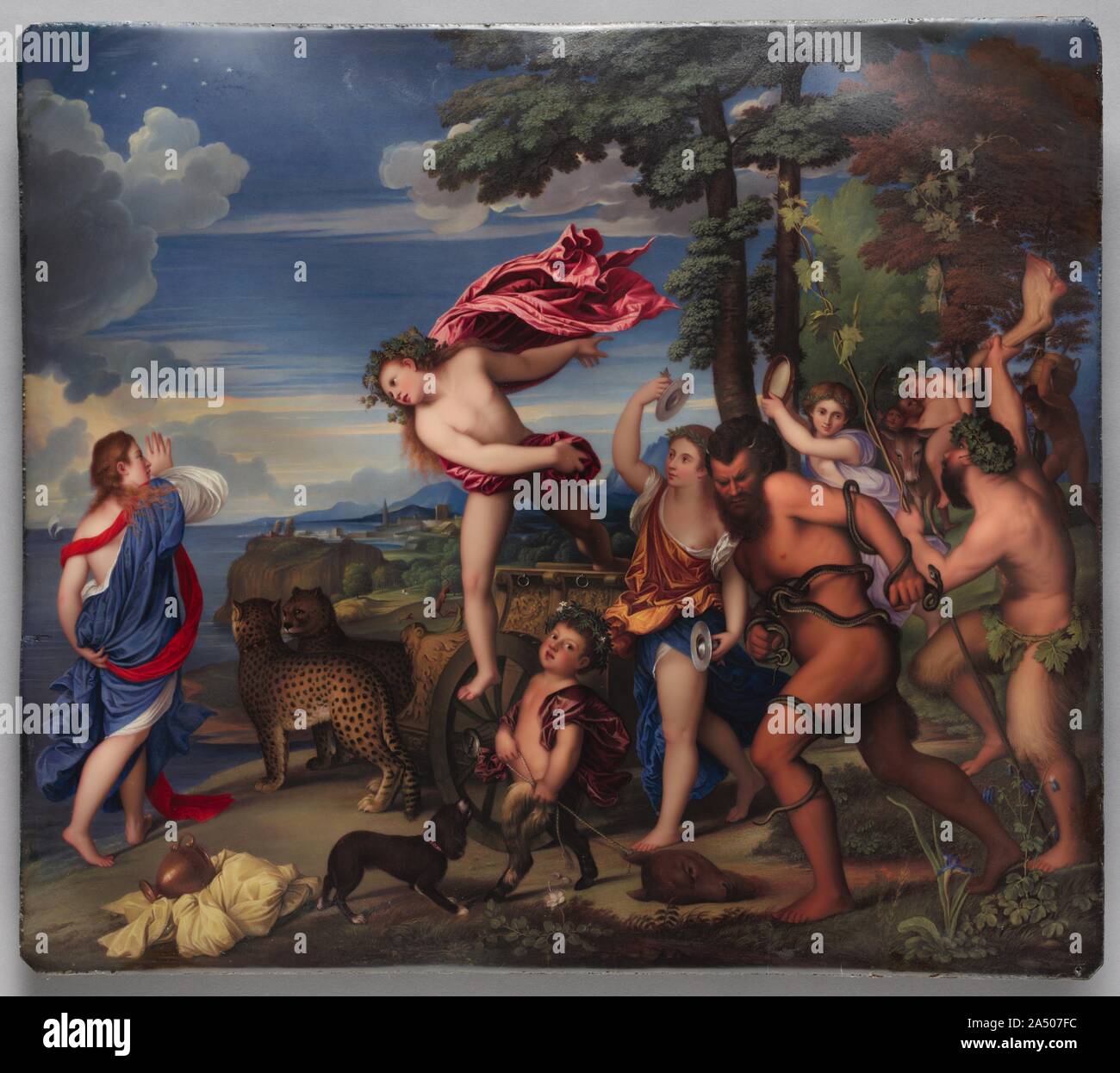Bacchus and Ariadne, 1808-1811. Henry Bone devoted three years of his life to creating this work, a tremendous technical achievement and the largest enamel that had ever been made. The painstaking process requires each application of colour to be fired at a different temperature. The enamel is after Titian's famous Bacchus and Ariadne , an early 16th-century Italian masterpiece. Bone had the lavishly carved, gilt wood frame designed specially for the work, indicating the cultural value placed on great enamel reproductions of a famous painting. Bone was unable to show this enamel at the annual

Image details
Contributor:
Heritage Image Partnership Ltd / Alamy Stock PhotoImage ID:
2A507FCFile size:
351 MB (8.8 MB Compressed download)Releases:
Model - no | Property - noDo I need a release?Dimensions:
11743 x 10448 px | 99.4 x 88.5 cm | 39.1 x 34.8 inches | 300dpiPhotographer:
Heritage ImagesMore information:
This image could have imperfections as it’s either historical or reportage.
Bacchus and Ariadne, 1808-1811. Henry Bone devoted three years of his life to creating this work, a tremendous technical achievement and the largest enamel that had ever been made. The painstaking process requires each application of colour to be fired at a different temperature. The enamel is after Titian's famous Bacchus and Ariadne , an early 16th-century Italian masterpiece. Bone had the lavishly carved, gilt wood frame designed specially for the work, indicating the cultural value placed on great enamel reproductions of a famous painting. Bone was unable to show this enamel at the annual Royal Academy exhibition because the Prince of Wales asked to see it. When the prince decided not to purchase it, Bone issued tickets for visitors to come see the work in his studio. More than 4, 000 people went to see the enamel before it was purchased by a collector.